Switching from normal sleeping bags to quilts some time ago, was one of my best gear decisions in the recent years.
In my opinion quilts and comforters (quilts which can be completely opened into a kind of blanket) are more comfortable and adaptable than normal sleeping bags. The major advantage of quilts, compared to sleeping bags, is the weight! Open back (using your sleeping pad as isolation) and the missing hood, cut down the weight drastically!
The lack of a hood can easily be replaced with a beanie or your puffy attached hood (usually I carry at least one of those two items). Compressed down at the back of your normal sleeping bag loses thermal isolation capability and is more or less useless, quilts save this useless weight and rely on the isolation of your pad. And I can tell you: it really works!
Choosing my new Cumulus 250 Quilt
When I decided to hike the Bibbulmun Track in Australia in November 2016, it was completly logical for me to use a quilt or comforter. However the two comforters I own, where too warm for the nightly temperatures I estimated in Australia. Since comforters can be used as open blankets, they probably would have done the job in warm temperatures but I simply didn’t want to carry too much weight and I decided to get a lighter quilt.
After a bit of research I soon decided to go with a Cumulus quilt. Cumulus offers a wide range of mostly down and synthetic isolation gear and is well known amongst European (ultra-)light outdoor enthusiasts. I expected temperatures down to 5°C for my upcoming trip. Cumulus praises their Quilt 250 with a comfort temperature of 4°C. That’s exactly what I was looking for.
Located in Poland, Cumulus is known for high quality equipment with a reasonable price tag. Most companies offering quilts are US based. Ordering a quilt within Europe has two main advantages: you don’t have to import and pay duties, plus the shipping is faster.
The Cumulus Customer Service replied fast to all my questions and gave me good advice. I am 186 cm tall and they suggested to get a long version of the quilt. The long version basically adds one down filled baffle to the regular version. I am happy about choosing the long version. I can comfortably snuggle up in the long version.
Cumulus offers a wide variety of customizable gear. There’s almost nothing you can change or add to your ordered equipment. For example you can get your quilt in different lengths and widths, with or without impregnated down, different shell materials, overfill, etc. Just ask the customer service and they will support you.
First impressions
After about 4 weeks I received my custom Quilt 250. First thing I do, I get out my kithen scale: 521 grams (without stuff sack) for a long version quilt with a comfort temperature, according to Cumulus, of 4°C. That’s good!
The quality of the material (Pertex Quantum, 27 g/m²) and stitching looks excellent. The 850 cuin polish goose down lofts well. The quilt is delivered with a stuff sack, storage sack and bungee cords and tankas.
The verdict
I planned to hike the whole 1000 km of the Bibbulmun Track in 4-5 weeks. Unfortunatelly my body didn’t last that long (see here) and I couldn’t test the Cumulus Quilt 250 as many nights on the trail as I planned to. Instead of 5 weeks on the track, the quilt was used on my road trip throughout Australia. In total I slept around 30 nights using this quilt.
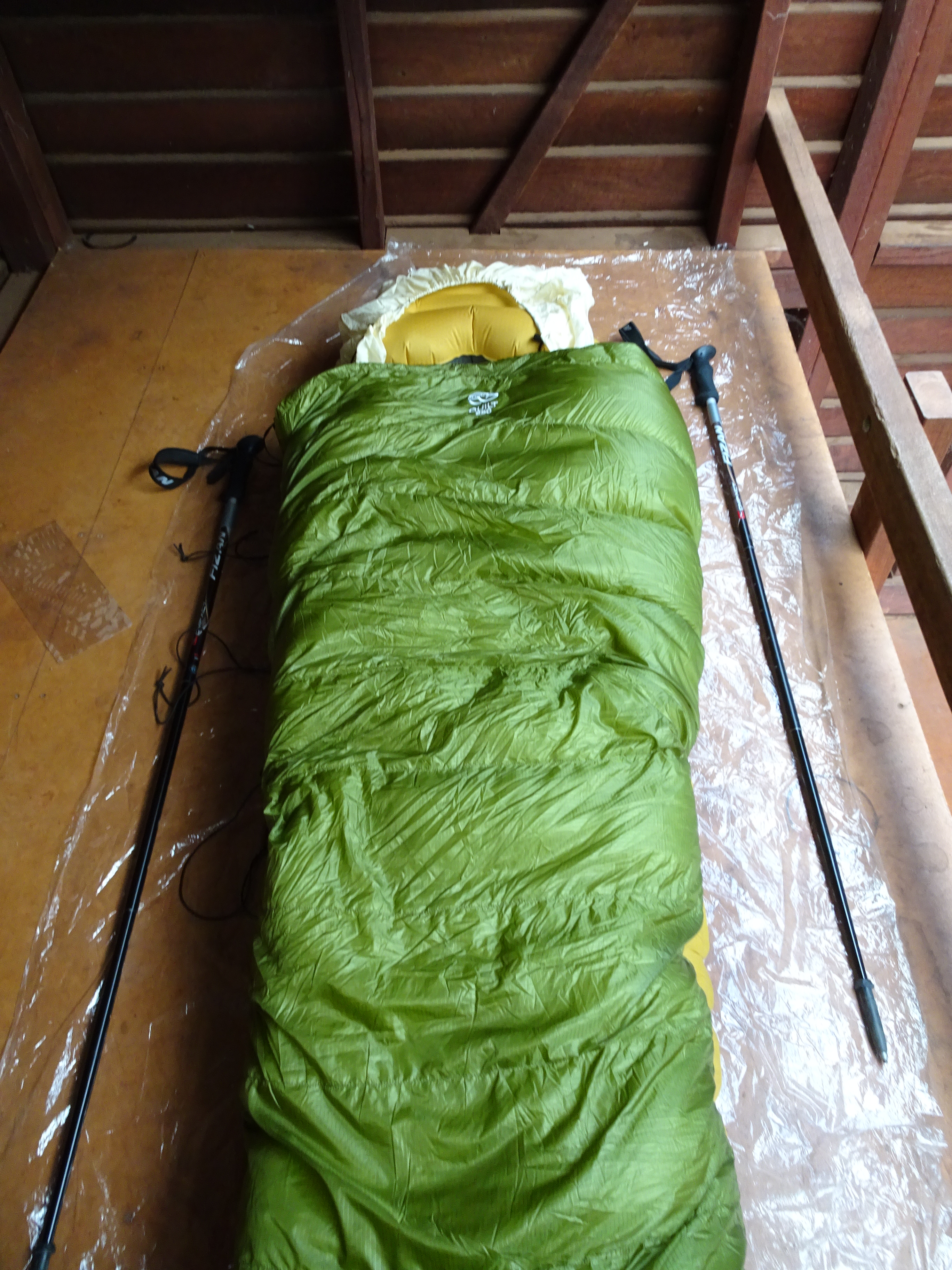
The Cumulus Quilt 250 offers high quality material and top craftmanship
The quilt is very lightweight and didn’t tear my backpacks baseweight down. I used a garbage bag as a waterproof backpack liner and avoided to compress the down too much, however if volume is your concern: it packs down very small if you stuff it!
The lowest temperature I experienced on the Bibbulmun Track was around 7-5°C. I always stayed warm in my quilt, using sleeping wear to avoid the quilt from getting dirty and greasy. In my opinion the comfort temperature of 4°C is realistic but may depend on individual factors, as some people are cold sleepers.
Since I „missused“ my quilt for the roadtrip after quiting my hiking trip, I experienced higher temperatures during nighttime than I planned for. In those nights my feet got very warm and sweaty, but this was mainly my fault because I simply used the quilt in too high temperatures for which it isn’t considered. However a comforter with adjustable footbox or opened up as a blanket would have been handy during those nights. So if you plan to buy a new sleeping system for a wider temperature range, you may think about buying a comforter instead of a quilt. In general the footbox oft he Quilt 250 seems to be a bit too high for my taste. A lower footbox would increase the ability to regulate your feet temperature.
I usually use sleeping wear or an inlet to keep my quilts clean, so I don’t have a lot of contact with the actual shell materials, however the Pertex Quantum feels comfortable next to skin. The Pertex Quantum material is very thin, thus very light. The shell leaked a down from time to time. Nothing much to worry about, but it always brakes my heart when I loose valuable down. In general the Pertex Quantum seems to be strong enough for years of adventures. Additionally Cumulus offers 10 years warranty for the product.
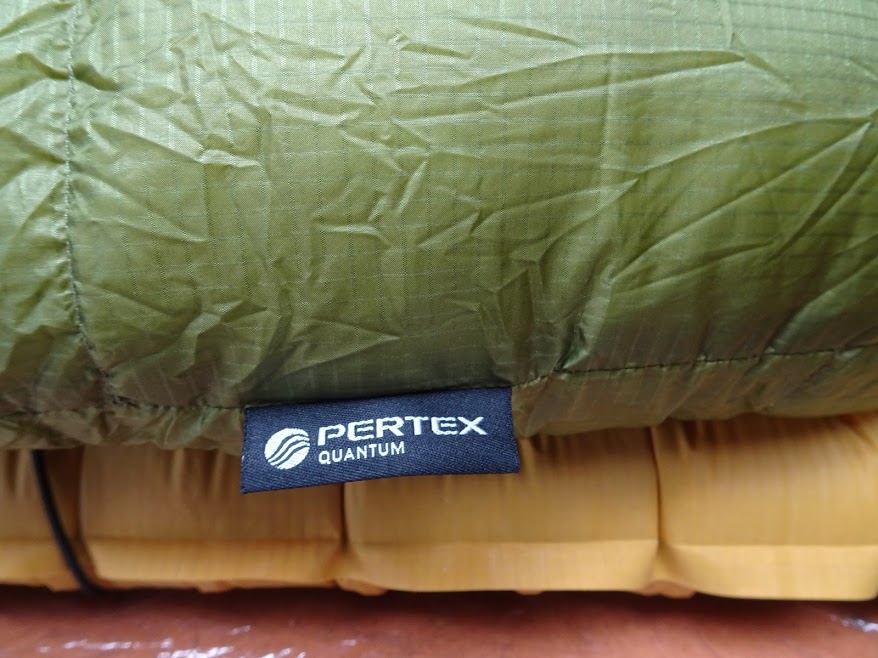
The Pertex Quantum shell is thin and light. It feels comfortable next to skin, however it leaked one or two downs.
The one thing I didn’t like was the strap system. The bungee cords wrap around your sleeping pad and tankas regulate the width. Very basic and yes it works, but somehow it is a bit flimsy and it takes more time to adjust my sleeping system than I want to spend (I am a very impatient man). There are definitelly better strap systems on the market, which for example use little buckles.
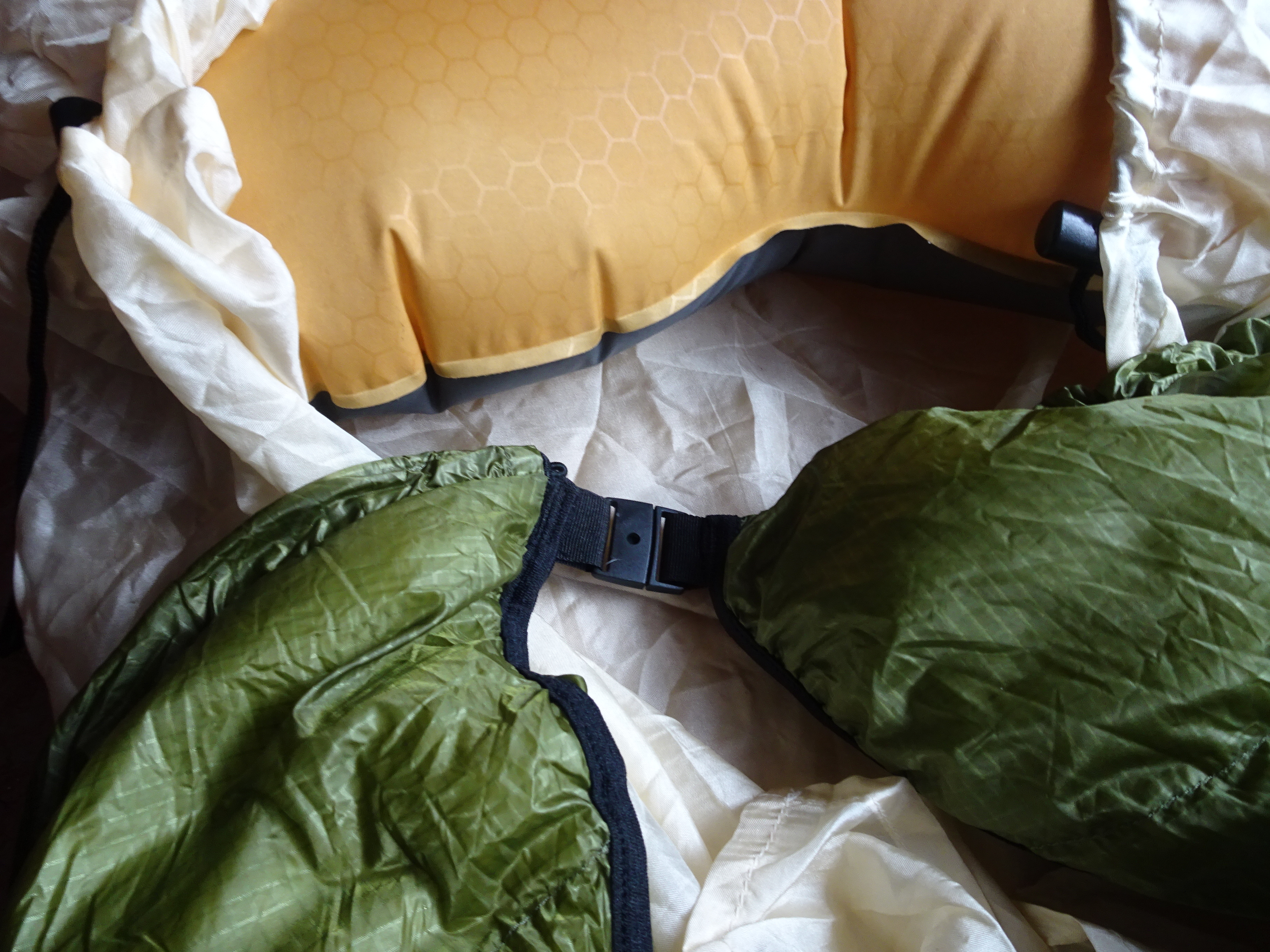
A small plastic buckle closes the quilt behind your neck. A similar system for the straps would be more convenient.
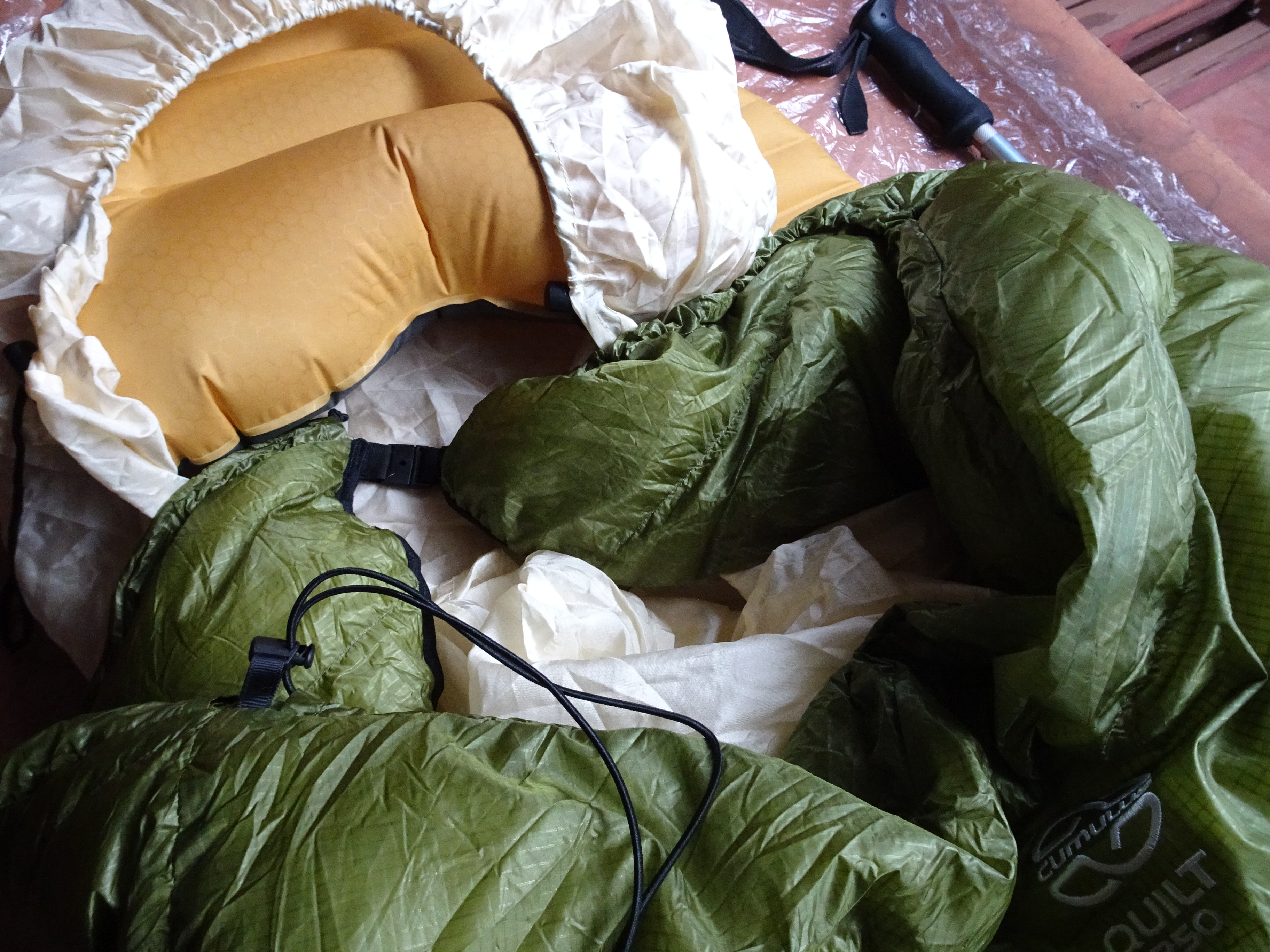
Using a bungee cord and tanka you can tie the quilt around your neck
You get top materials, appropriate temperature rating, very light weight and small volume for a very good price. The little flaws can’t outweight the positive aspects and if you want good value for your money, you should definitelly have a closer look at the Cumulus quilt range. They offer good customer service and a lot of customization options. If you want more flexibility and don’t care about a little more weight, you may also consider to get a comforter.
What I like:
- Very good price compared to other down bag or quilt manufactories
- Good quality and craftmanship
- Cumulus Customer Service
- Fully Customizable (e.g.down fill weight, length, width, hydrophobic down, shell material, etc.)
- Very light, much lighter than normal sleeping bags
- Apropriate temperature rating
- Material is comfortable next to skin
- Highly compress- and packable (BUT: don’t stuff the down too much!)
- Only one of two Europe based, fully customizable quilt manufactories I know about (saves a lot of time and money compared to US imports!)
What I dislike:
- Strap system is a bit flimsy
- Shellmaterial leaks a down from time to time
- Footbox is a bit too high (feet tend to get too hot, without an option to cool them down)
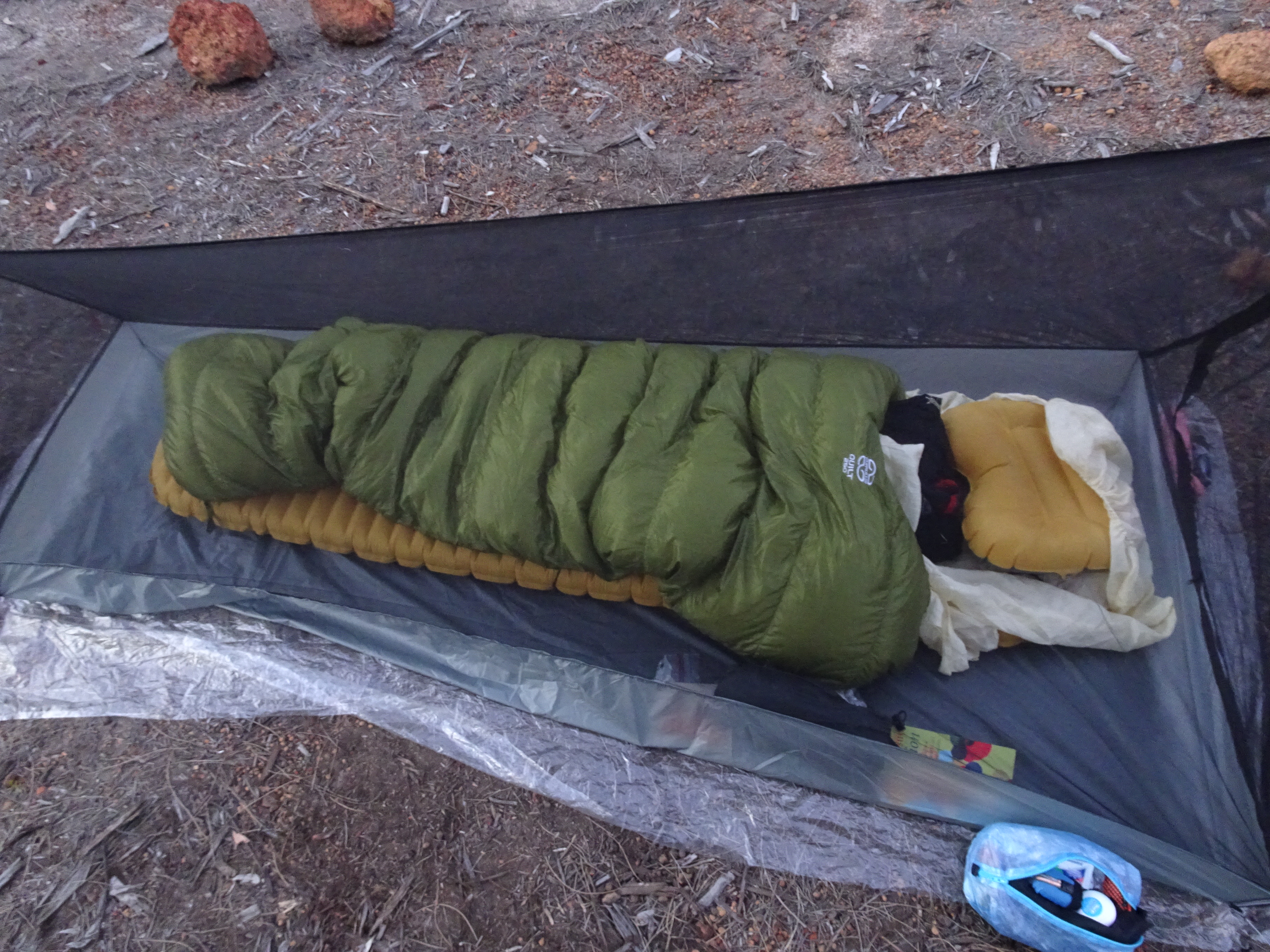
The Cumulus Quilt 250 and my very lightweight sleeping-shelter system. The quilt performs well and I can recommend it with no doubt.
Disclaimer: Cumulus supported me for this trip. However most of the expenses for the product were covered by my own budget. This doesn’t influence my opinion on this product.


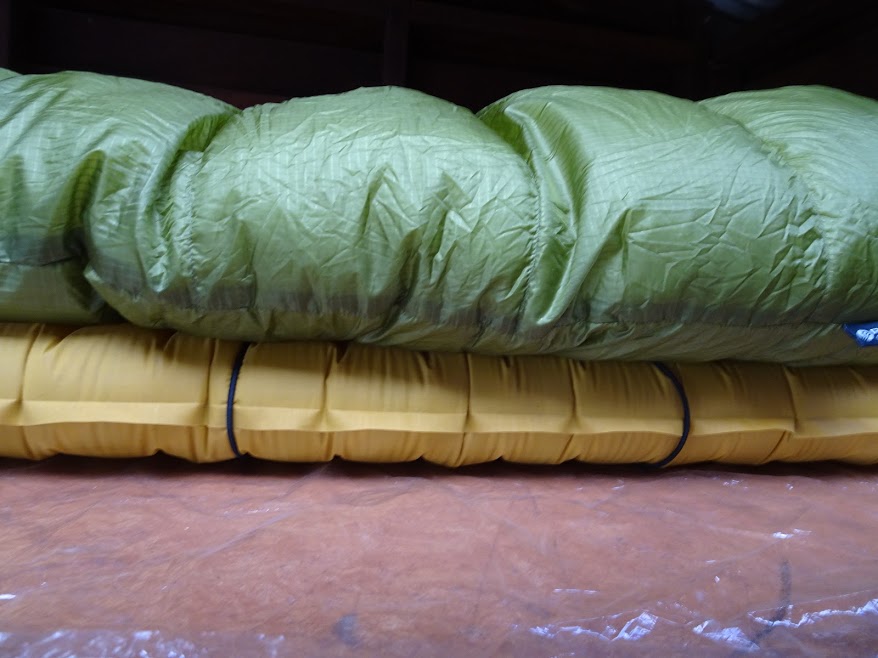
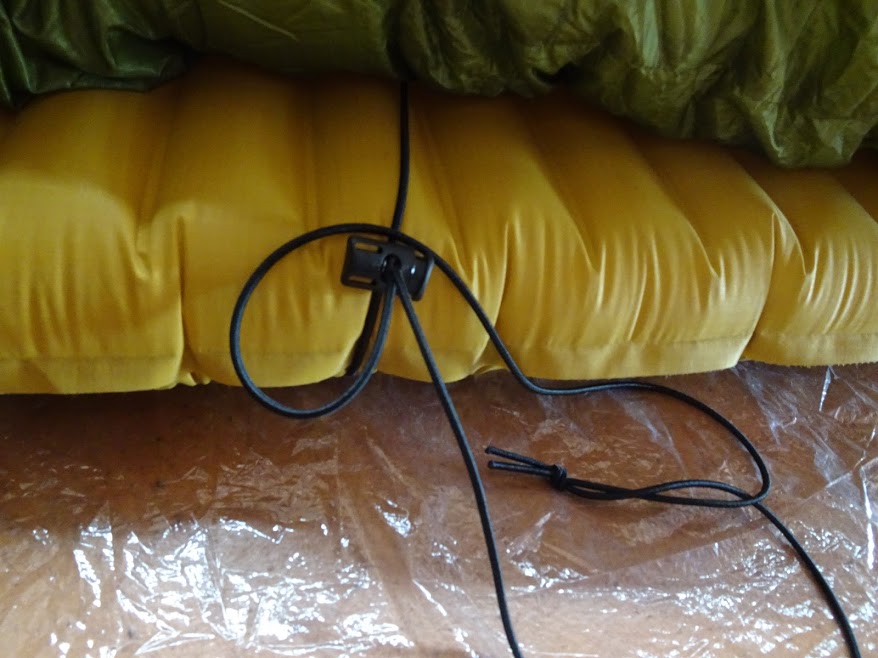
3 Kommentare
Have you found a better way to use the straps that attaches it to the pad? I’ve got a Quilt 350, and i really want to like it, but I can’t get the straps ok, so everytime I turn, the entire quilt follows, leaving me with the cold gap in the back. If you’ve got any tips on how to avoid it I’d be very greatful.
Hey, thanks for your message.
I am using the „official“ method lile shown in this pic: https://encrypted-tbn2.gstatic.com/images?q=tbn:ANd9GcRcuI-GQdb8WfSH3Qw-jfvOV2je-0Yh4VU1UTjvM4eqZZ_Zr-zY
As mentioned, the strap system isn’t the best in my opinion. However I really set the cords on thight using the Tanka and the elastic cords under tension. This way it doesn’t move for me. One drawback pulling it thight is that you can’t get fresh air easiely and you have to pop and turn in the middle of the night.
In the past I also played a bit around and used another method: I pushed the edges of the Quilt/Comforter slightly under my sleeping pad, not using the cords as a loop around the pad, just holding together the two edges underneath the pad with one tensioned elastic cord. This way the Quilt stays in place and you can turn inside since it is like a coccoon. One drawback with this methood can be, depending on the type of Quilt/Comforter, that there may be gaps between quilt and pad… You have to try it.
Otherwise you always can modify the strap system yourself (MYOG). If you don’t know about them: Enlightened Equipment and Katabatic Gear has nice systems, maybe you can build similar ones onto your Cumulus using your sewing skills.
Cheers, Dominik
Yeah I guess some kind of DIY solution might be the best way to go, but I just wanted to check if there were ways to use the existing straps to solve the problem. But I have been really close to buying the straps from enlightened equipment and sew fitting buckles on the quilt: http://www.enlightenedequipment.com/elastic-pad-straps/
Seems like it might be the best way to go.
https://brianoutdoor.wordpress.com/ doesn’t attach his quilt to the pad at all, and I might try that before I’ll start sewing.